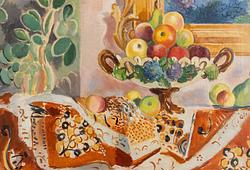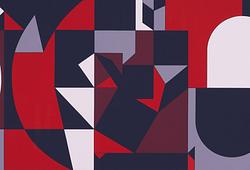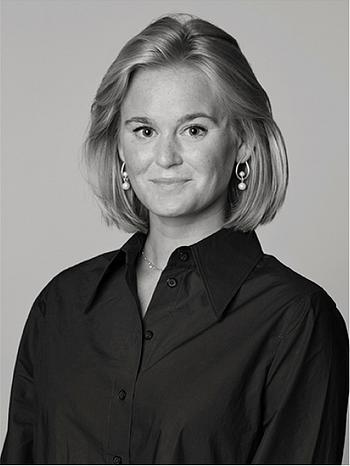Lars-Gunnar Nordström
"Formation (Röd)".
Signed L-G Nordström on the reverse. Panel 73 x 49 cm.
Provenance
Åmells Konsthandel, Stockholm.
Private Collection.
More information
Lars Gunnar Nordström arrived in Paris in 1949, where he came into contact with the paintings of Magnelli, Jean Dewasne, and Vasarely. Through this discovery, he also became familiar with contemporary Nordic artists from Scandinavia: Robert Jacobsen, Richard Mortensen, and Olle Baertling. Inspired by their non-representational painting, he began creating geometric works with contours defined by straight lines, sharp edges, angles, arcs, curves, circles, squares, rectangles, and triangles.
He held his first solo exhibition in Helsinki in 1949, where his concrete, constructive paintings with smoothly painted surfaces attracted attention. Ripolin paint gave his surfaces a glossy finish with reflections.
During a trip to the United States, he encountered Josef Albers’ color theory and his seminal work Interaction of Color, which would later have a decisive influence on Op Art within concrete art. In the U.S., he also discovered the paintings of Alexander Calder and Stuart Davis, whose reliance on the interaction of color with its surroundings fascinated him. Within Nordic concrete art, Nordström became a pioneering figure and a major influence on his contemporaries.
Like Baertling, he emphasized three-dimensional forms and explored the dynamic effects of color on the viewer. Together with Auguste Herbin, Robert Jacobsen, Richard Mortensen, Olle Baertling, Gorin Magnelli, Josef Albers, and Jean Dewasne, he belongs to the true pioneers of concrete art and was a key innovator in painting during the 1950s and 1960s.













































